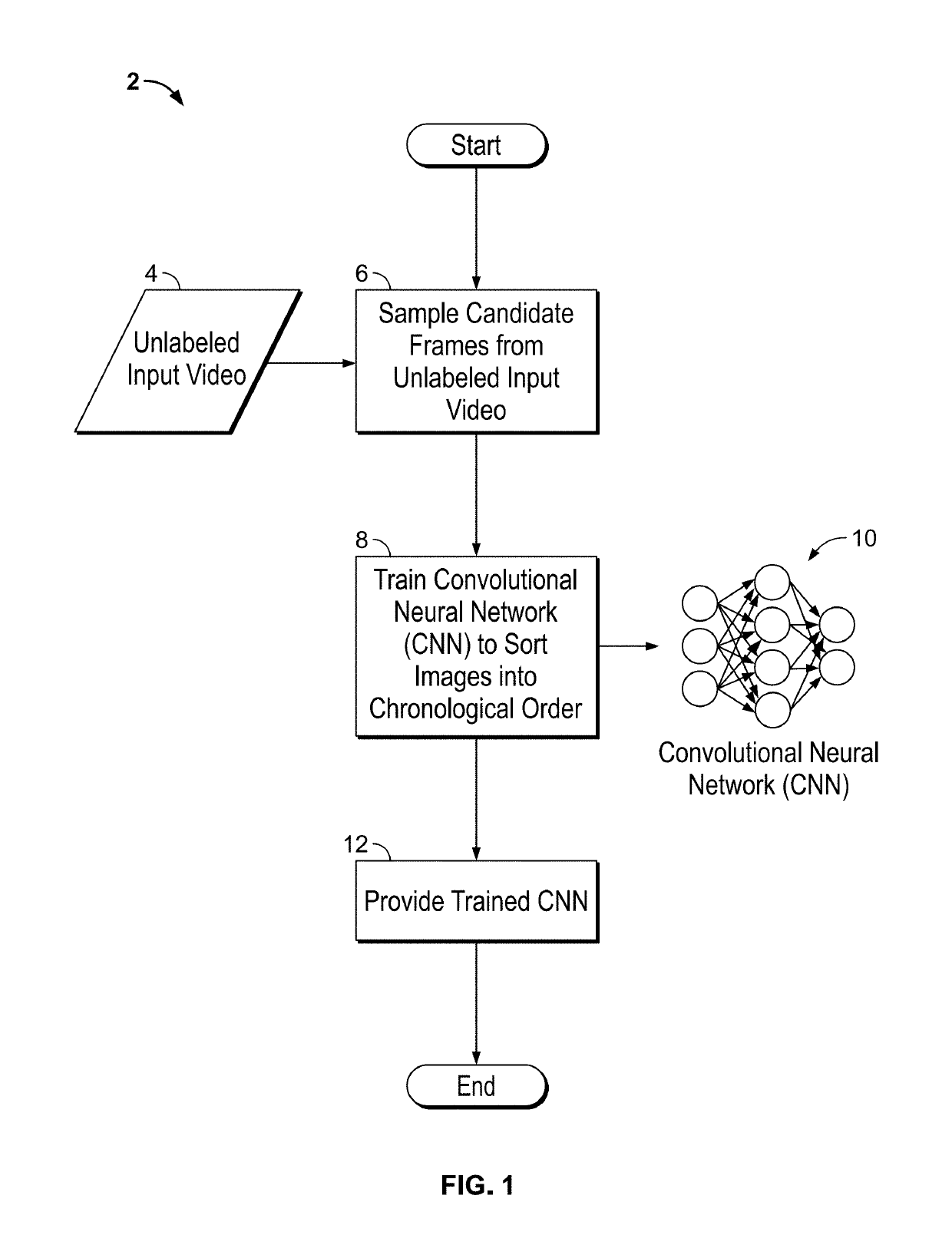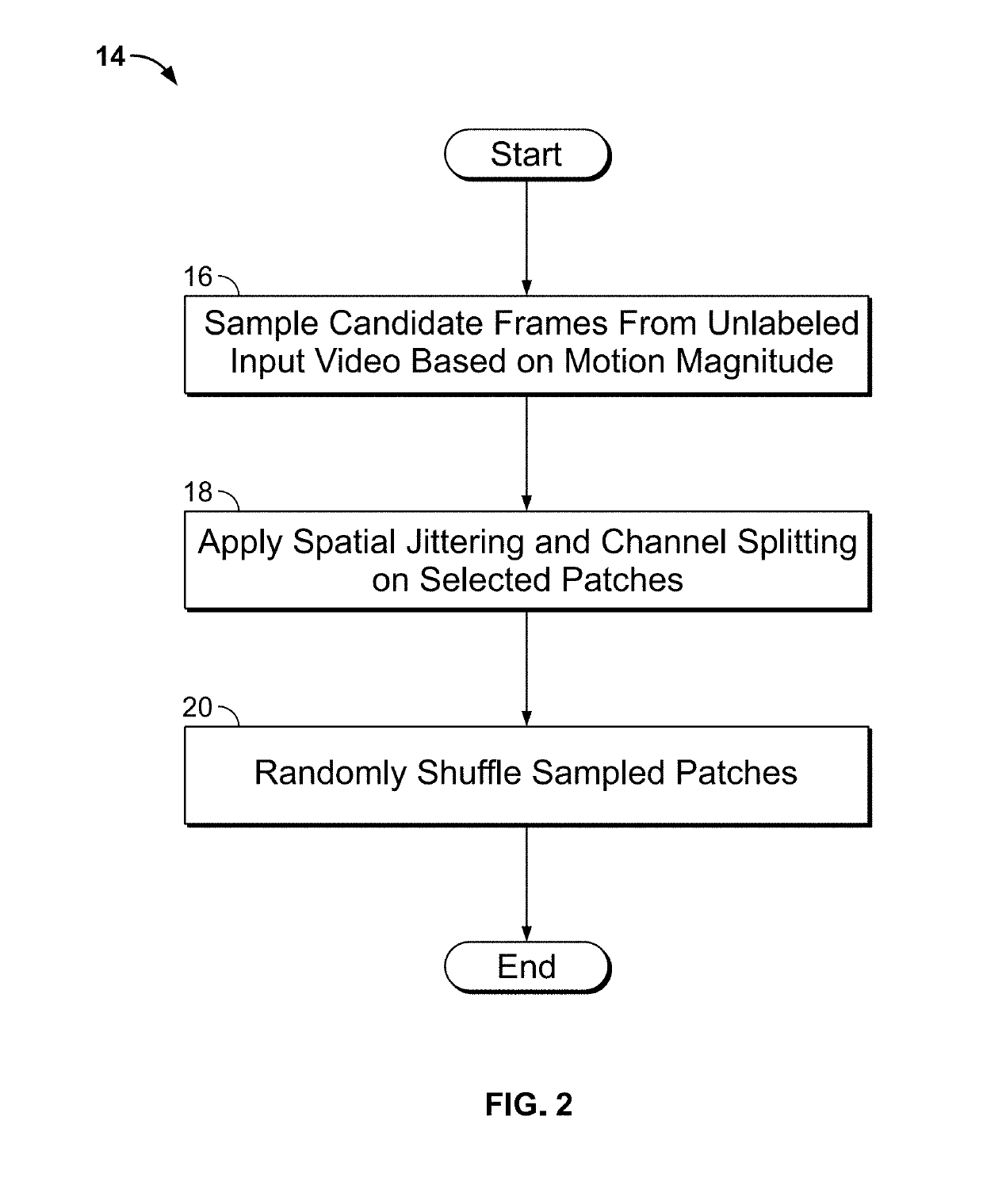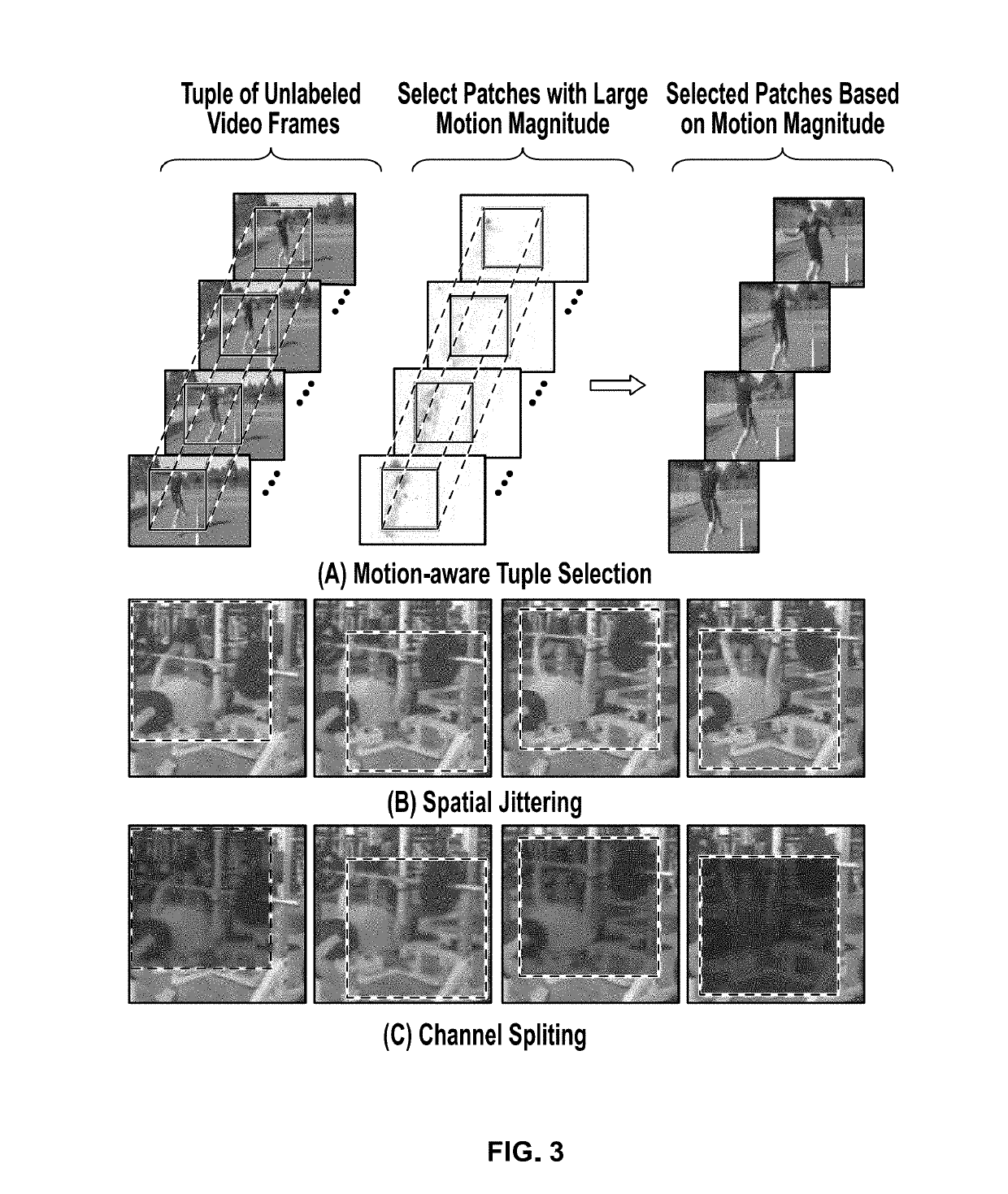Computer Vision Systems and Methods for Unsupervised Representation Learning by Sorting Sequences
a computer vision and sequence technology, applied in the field of computer vision, can solve the problems of limiting the scalability of cnns to new problem domains, the importance of unsupervised learning to leverage vast amounts of unlabeled, and the high cost of manual annotations, so as to facilitate machine learning of features
- Summary
- Abstract
- Description
- Claims
- Application Information
AI Technical Summary
Benefits of technology
Problems solved by technology
Method used
Image
Examples
Embodiment Construction
[0026]The present disclosure relates to computer vision systems for unsupervised representation learning by sorting sequences, as discussed in detail below in connection with FIGS. 1-17. The system is particularly useful for performing machine visual recognition of objects in videos. In particular, the present disclosure provides a surrogate task for self-supervised learning using a large collection of unlabeled videos. Given a tuple of randomly shuffled frames, a neural network is trained to sort the images into chronological order. Solving the sequence sorting problem provides strong supervisory signals as the system needs to reason and understand the statistical temporal structure of image sequences. In comparison to images, videos provide the advantage of having an additional time dimension. Videos provide examples of appearance variations of objects over time. Successfully solving the sequence sorting task will allow the CNN to learn useful visual representation to recover the ...
PUM
 Login to View More
Login to View More Abstract
Description
Claims
Application Information
 Login to View More
Login to View More - R&D
- Intellectual Property
- Life Sciences
- Materials
- Tech Scout
- Unparalleled Data Quality
- Higher Quality Content
- 60% Fewer Hallucinations
Browse by: Latest US Patents, China's latest patents, Technical Efficacy Thesaurus, Application Domain, Technology Topic, Popular Technical Reports.
© 2025 PatSnap. All rights reserved.Legal|Privacy policy|Modern Slavery Act Transparency Statement|Sitemap|About US| Contact US: help@patsnap.com



